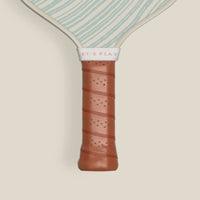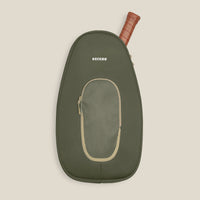Pickleball Kitchen Rules: Tips, Strategies & More
When you step onto a pickleball court, there’s one area that often becomes the focal point of both strategy and controversy: the kitchen. Whether you’re a pickleball pro or just picking up a paddle for the first time, understanding the pickleball kitchen rules is critical for taking your game to the next level. This article will deep-dive into the kitchen—exploring its rules, uncovering strategic secrets, and answering those burning questions you might have about one of the more unique parts of the game of pickleball. Let’s get into it!
What is the Kitchen in Pickleball?
Before we jump into the rules and strategies, let’s start with the basics: What is the kitchen in pickleball? The kitchen, also referred to as the non-volley zone, is the 7-foot area extending from the net on both sides of the court. In terms of strategy, it’s one of the most crucial areas of the court because of the restrictions it places on volleys (shots taken out of the air before the ball has a chance to bounce).
The kitchen is designed to level the playing field between the two teams, emphasizing finesse and strategy over brute strength. By prohibiting volleys within this zone, the game encourages longer rallies, dinks (soft shots), and a more strategic approach to net play. The kitchen, therefore, becomes the ultimate test of control and precision in pickleball.
Why is it Called the Kitchen in Pickleball?
So, why is it called the kitchen in pickleball? The origins of the term “kitchen” in pickleball are somewhat of a mystery. However, the name is believed to be borrowed from shuffleboard, where the “kitchen” refers to a penalty area on the board. While in shuffleboard, entering the kitchen results in lost points, in pickleball, the kitchen is an area of strategic importance that you can’t ignore. However, entering the kitchen and volleying can result in a loss of that point.
The name “kitchen” stuck, perhaps because it adds a bit of playful character to the game, much like other quirky pickleball terms. The kitchen in pickleball is a zone that demands respect. It’s where the finesse of the game truly shines, requiring players to be tactically sound and physically disciplined.
The Pickleball Kitchen Rules You Need to Know
Mastering the kitchen starts with knowing the rules inside and out. Here’s a comprehensive breakdown of the pickleball kitchen rules:
- No Volleying in the Kitchen: The most fundamental rule of the kitchen is that you cannot volley the ball while you’re inside the kitchen or if any part of your body touches the kitchen line. So, what is a volley in pickleball? A volley is defined as striking the ball before it bounces. This rule is in place to prevent players from dominating the net with aggressive smashes.
- Entering the Kitchen: While you can enter the kitchen at any time, you cannot hit a volley while inside it. However, you are allowed to step into the kitchen to play a ball that has bounced, as long as you exit the zone immediately afterward.
- Momentum Carrying into the Kitchen: If you volley the ball from outside the kitchen but your momentum carries you into the kitchen afterward, it’s considered a fault. This is a common mistake, especially for aggressive players who like to attack the net. To avoid this, focus on controlling your forward motion during volleys.
- Grounded Shots: You’re allowed to play the ball within the kitchen as long as it has bounced first. This means that dinks, drop shots, and other soft touches are perfectly legal within this zone.
- Doubles Play Considerations: In doubles, both players must be keenly aware of the kitchen rules. Effective communication between partners is crucial to avoid faults, especially when both players are near the net. For more on doubles strategy, visit our 10 Pickleball Doubles Strategies blog.
- The Kitchen Line is Part of the Kitchen: Remember, the kitchen line itself is considered part of the kitchen. This means that if your toe touches the line while volleying, it’s a fault. Always ensure that your feet are clearly behind the line when you’re executing a volley.
These rules are designed to keep the game fair and enjoyable for players of all skill levels. By understanding and adhering to these guidelines, you’ll avoid unnecessary penalties and keep your game sharp.
Strategies for Dominating the Kitchen
While the kitchen might seem like a restrictive area, it’s actually a zone of opportunity—if you know how to use it. Here are some strategies to help you dominate the kitchen in pickleball:
- Master the Art of the Dink: The dink is your best friend in the kitchen. This soft shot forces your opponent to play a difficult, low-return shot. The dink keeps your opponent on their toes and can set you up for an aggressive follow-up shot.
- Stay Light on Your Feet: Agility is key when playing in and around the kitchen. Practicing your footwork will make you more effective at the net.
- Use the Kitchen to Your Advantage: The kitchen limits your opponent’s ability to smash the ball, so use this to your advantage by engaging in longer rallies that test their patience and precision.
- Vary Your Shots: Keep your opponents guessing by mixing up your shots in the kitchen. The element of surprise can often lead to easy points.
- Communicate with Your Partner: Let your partner know when you’re moving into the kitchen or when you’re planning to execute a specific shot.
- Watch Your Opponent’s Feet: Pay close attention to your opponent’s positioning in the kitchen. If they’re too aggressive, they might be setting themselves up for a fault.
- Know When to Step Back: If your opponent is dominating the kitchen line, consider stepping back a bit to give yourself more time to respond to their shots.
How Big is the Kitchen in Pickleball?
The kitchen measures precisely 7 feet from the net on both sides of the court. While this might seem like a small area, it has a massive impact on how the game is played. The kitchen’s dimensions are designed to prevent easy put-away shots right at the net, thereby encouraging a more strategic and skillful style of play.
For a full understanding of the court layout and how the kitchen fits into the overall design, take a look at our Understanding the Pickleball Court: A Comprehensive Guide to Court Dimensions. Knowing the dimensions and layout of the court will help you position yourself better during play.
Common Mistakes to Avoid in the Kitchen
Even experienced players can fall into common traps when playing in the kitchen. Here are a few mistakes to watch out for, along with tips on how to avoid them:
- Leaning Into the Kitchen While Volleying: It’s easy to get caught up in the action and lean into the kitchen while attempting a volley. This seemingly small misstep can lead to a fault, so always be aware of your balance and positioning.
- Overcommitting to the Kitchen: While controlling the kitchen is important, overcommitting to it can leave you vulnerable to lobs and other deep shots. Make sure to maintain a balanced position where you can quickly retreat if necessary.
- Neglecting the Kitchen Line: The kitchen line is a critical boundary. If you’re too focused on the ball and forget where your feet are, you might accidentally step on or over the line, leading to a fault. Practice drills that help you stay aware of your positioning relative to the kitchen line.
- Ignoring the Power of the Dink: Some players underestimate the effectiveness of the dink, preferring to rely on power shots instead. However, the dink is a strategic tool that can disrupt your opponent’s rhythm and force errors. Don’t overlook it!
- Focusing Solely on the Kitchen: While the kitchen is crucial, don’t forget about the rest of the court. Being too kitchen-centric can make you predictable. Incorporate a variety of shots and strategies to keep your opponent guessing.
The Importance of the Kitchen in Pickleball
The kitchen is more than just a marked area on the court; it’s the heartbeat of pickleball strategy. Unlike other sports where sheer power often reigns supreme, pickleball requires a delicate balance of finesse, timing, and tactical thinking—all of which are tested in the kitchen.
Playing well in the kitchen requires you to think several moves ahead, anticipate your opponent’s actions, and respond with precision. It’s where the mental game of pickleball truly comes to life. By mastering the kitchen, you can control the pace of the game, force your opponent into uncomfortable situations, and ultimately gain the upper hand.
Conclusion: Master the Kitchen, Master the Game
Understanding and mastering the pickleball kitchen rules is essential for anyone serious about improving their game. Whether you’re working on your dinks, refining your footwork, or strategizing with your partner, the kitchen is a key area of the court where your skills will surely be tested.
So, the next time you step onto the court, embrace the kitchen. Use its restrictions to your advantage, apply the strategies we’ve discussed, and you’ll surely find yourself winning more points—and more games.
For those looking to further elevate their game, consider exploring our range of Pickleball Paddles to find the perfect fit for your style. Or, if you want to mix it up, try our popular Design Your Own Paddle offer, where you can customize your own text, fonts, colors, and more!
And remember, pickleball is about more than just winning. It’s about enjoying the game, improving your skills, and having fun on the court. So get out there, respect the kitchen, and most importantly, enjoy every moment of your pickleball journey!










